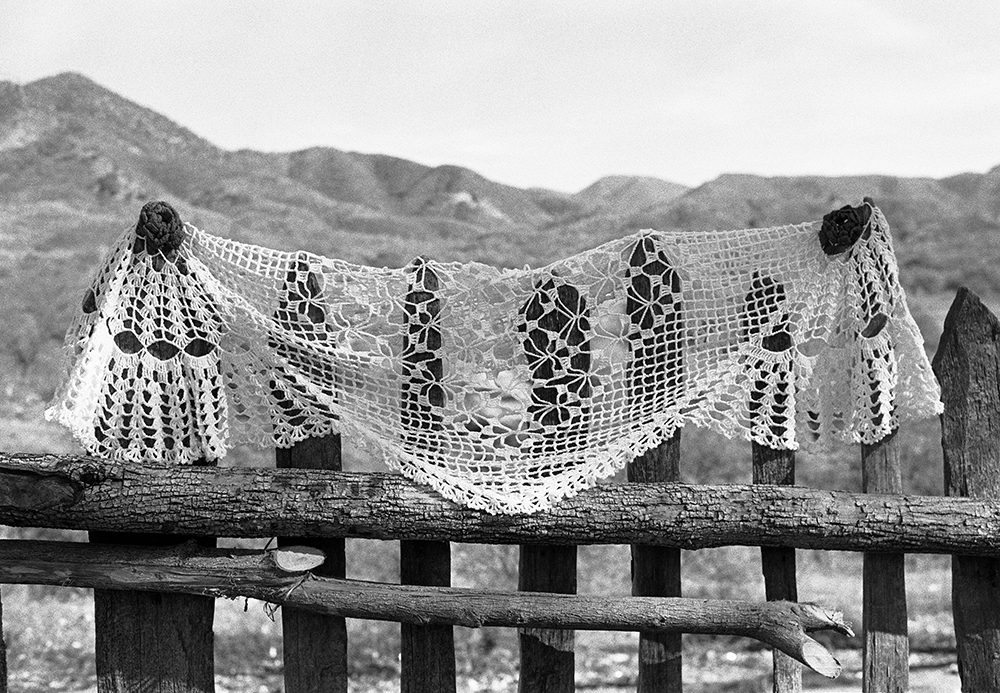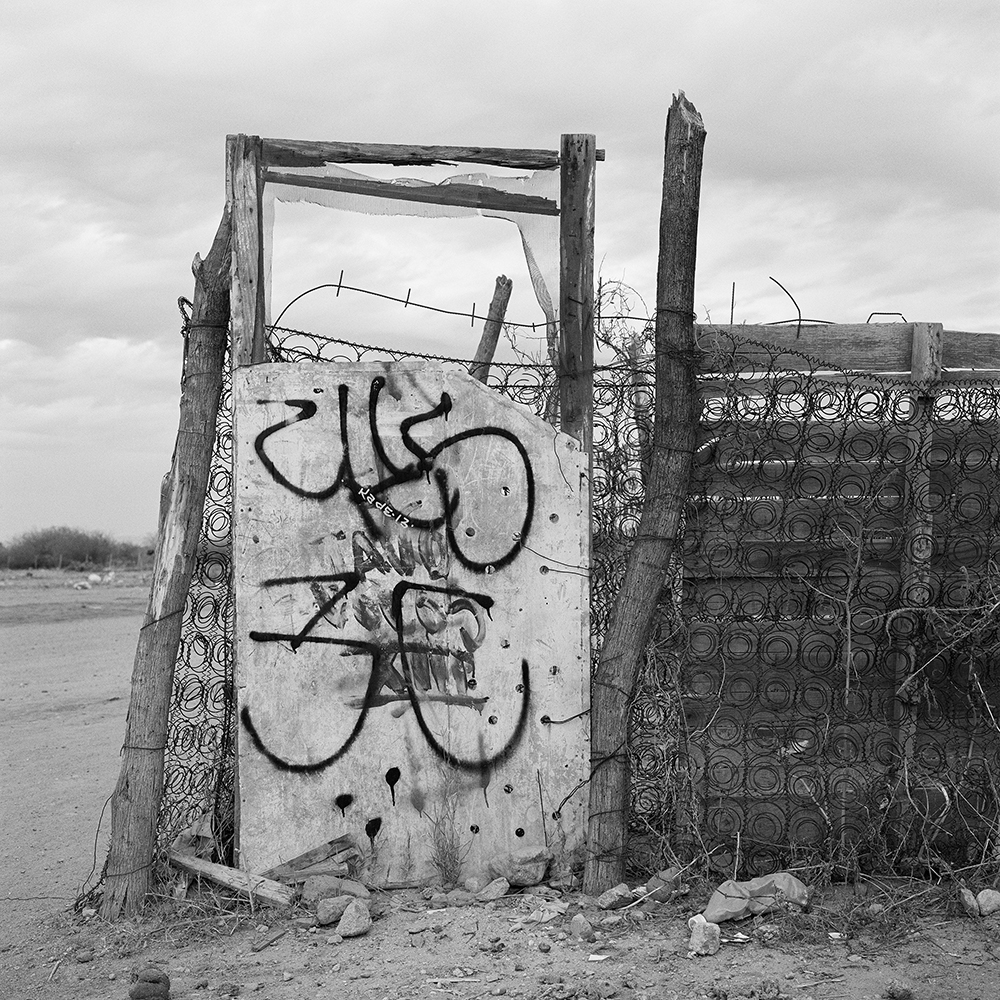Emily Matyas: SOL Y TIERRA / SUN AND EARTH

©Emily Matyas, from SOL Y TIERRA / SUN AND EARTH, “Above the Village/Arriba del Pueblo” Guadalupe de Tayopa, 1989
Photographer Emily Matyas has a legacy of humanist photography, seeing beyond our borders into other cultures and bringing back beauty and understanding. For the past 30 years, Emily has crossed into Mexico to photograph the grace of every day life. Her new book, Sol y Tierra: Views Beyond the U.S.-Mexico Border, 1988-2018, published by Daylight, includes a foreword by Kirsten Rian and contributions by Amparo Wong Molina, Sergio Anaya, and Linda Valdez.
The timely release of this project allows us to understand a people under fire from Washington politicos. The book reflects not an enemy, but a culture of hard working, family loving Mexicans, who use the sun and the earth to eek out a living. Her dozens of trips to Mexico have given her a deep appreciation for the quiet humanity of what and who is across the border. Her photographs “invite dialogue between Mexico and the United States as viewers on both sides may recognize something of themselves in the pictures.”
Emily Matyas is a photographer whose interests combine social issues, culture, family relations, history and psychology. She began her career as a journalist and then embraced fine art. Her work includes intimate settings from the United States, Mexico and Romania. Most of her imagery is figurative, utilizing her immediate family, friends and herself. Her portfolio of life in rural Mexico spans 30 years. It is now a bilingual book titled Soly y Tierra/Sun and Earth, published by Daylight Books in 2019. Her MFA work, completed in 2002 at Arizona State University, incorporates philosophical vignettes of family life. She has taught at ASU, Scottsdale Community College, and done many youth workshops through local arts agencies. She received a Julia Margaret Cameron Award in 2010 and 2017. Her images are widely exhibited both nationally and internationally. She lives and works in Tempe AZ.
Statement for Sol y Tierra/Earth and Sun
The story of my travels in Mexico is a love story. An ardent love for a country not my own and people not related to me.
I’ve crossed the border between Mexico and the United Sates dozens of times over the last 30 years. Passing to “the other side,” I feel as though I’m entering a mirrored reflection of the world I just left. Things are different—yet recognizable. It reminds me of looking through the ground glass of a view camera.
My time in Mexico was a turning point in my process as a photographer. I was working for the community development organization FAI (Fundación de Ayuda Infantil, Child Assistance Foundation) in Ciudad Obregón, Sonora.
At first, I used color transparency film, illustrating projects for the foundation. As my vision changed, I switched to black-and-white and focused on details of space, emotions, and the nuanced encounters that unfolded before me. In recent visits to Sonora, my photographs center on urban areas, and I’ve returned to color through digital capture.
As I made trips back and forth across the Mexico-U.S. border, I saw the landscape, objects and trajectories of people’s lives change in response to economics, politics, the infiltration of a drug culture, attitudes toward immigration, and environmental challenges. According to social workers with FAI, a large reason for migration out of rural Mexico is the intense drought that began there in the 1990s and continues still. Add cultural and economic changes that favor big business over small family farms, and one begins to understand why some people leave.
Through my photographs, I seek to illuminate moments in the lives of people—
both near and far from my home—who too often may recede into the shadows. My propensity is to put myself in someone else’s place, to find similarities where there appear to be none, to learn how to communicate, and to see where we intersect as human beings.
To me, many of the images in Sol y Tierra signify or respond to a variety of issues we now experience between the U.S. and our southern neighbors. Particularly, dividing lines on the landscape, placing children in a corner where they cannot thrive, or coming to a yard for an intimate conversation – it’s our choice how to live with each other.
I hope these images start a dialogue across borders, one that goes beyond stereotypes, replaces the notion of “them” with “we,” and conveys the inherent
value of understanding each other, person-to-person, nation-to-nation.

©Emily Matyas, from SOL Y TIERRA / SUN AND EARTH, “Nightly Homework/Tarea Nocturns” Guadalupe de Tayops, 1989

©Emily Matyas, from SOL Y TIERRA / SUN AND EARTH, “Mother and Daughter/Madre e Hija” Guadalupe de Tayopa, 1995

©Emily Matyas, from SOL Y TIERRA / SUN AND EARTH, “Handiwork/Manualidades” Guadalupe de Tayopa, 1989

©Emily Matyas, from SOL Y TIERRA / SUN AND EARTH, “Gazing to Where Opposites Meet/Mirando hacia Donde los Opuestos se Encuentran.
Posts on Lenscratch may not be reproduced without the permission of the Lenscratch staff and the photographer.
Recommended
-
Smith Galtney in Conversation with Douglas BreaultDecember 3rd, 2024
-
Michael Rababy: CASINOLAND: Tired of WinningNovember 29th, 2024
-
Kari Varner: Blueprints for Slaughter and GroundworkNovember 14th, 2024
-
Jason Lindsey: FRAYED DREAMS UNDER STARS AND STRIPESNovember 12th, 2024
-
New England Portfolio Review: Ann Hermes: Local NewsroomsOctober 24th, 2024





































































